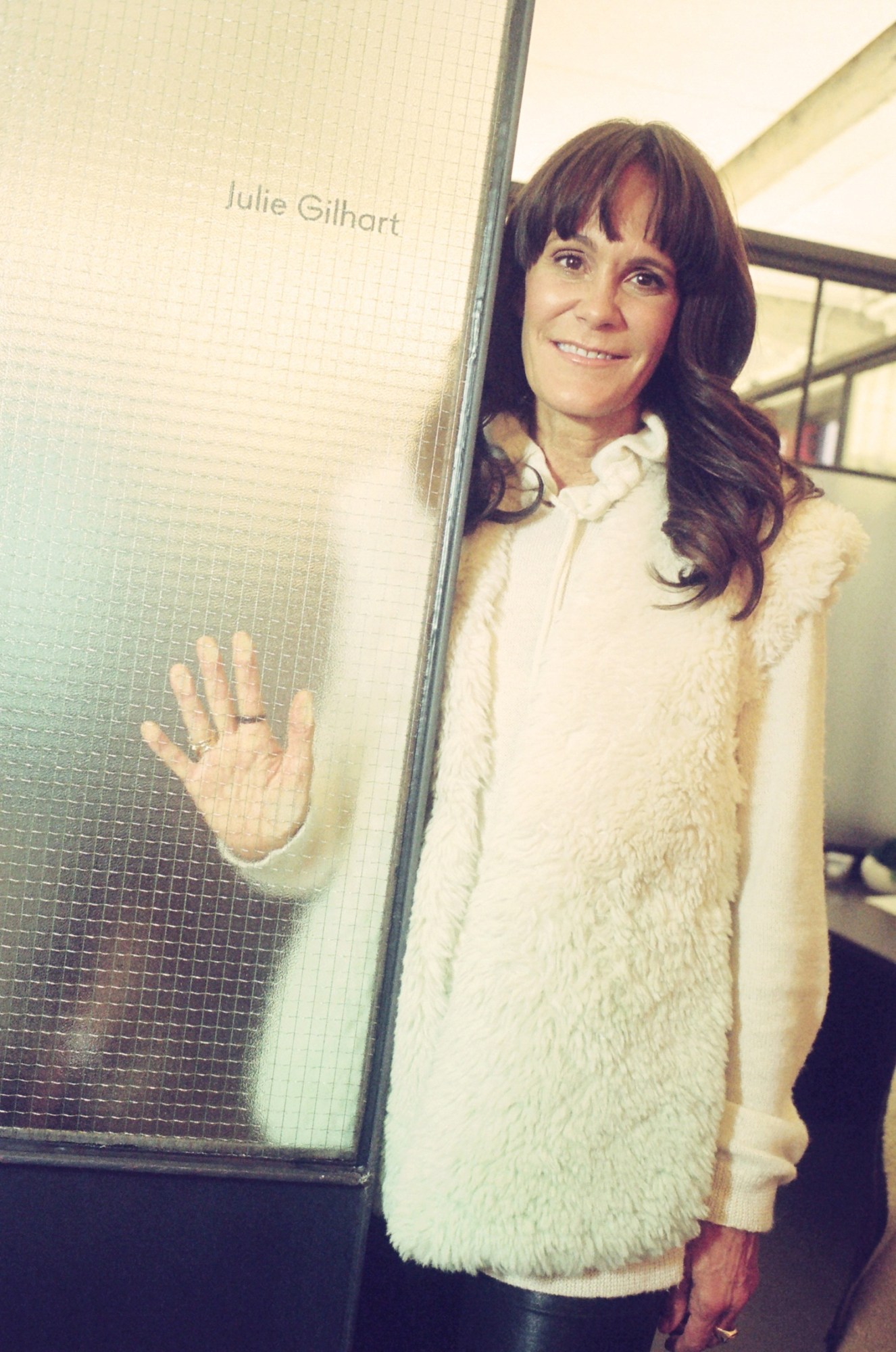“Did you watch those people free-climb El Capitan?”
Julie Gilhart is searching for an image to describe what it’s like to work in fashion and care about the environment. She’s wearing a fuzzy alpaca vest—perhaps why mountaineering comes to mind. The 3,000-foot rock face in Yosemite couldn’t be further away from our cozy ramen lunch at NeueHouse in Gramercy. But it’s an apt analogy for pushing a prestigious yet high-polluting industry to clean up its act.
Making inroads is more about instinct than knowledge, she says. “At the end of the day, you either care about the environment or you don’t. If you do, you’re making decisions to help it.”
As Barneys’ lead womenswear buyer, Gilhart achieved success by following her gut. In her 18-year tenure, she plucked many a young designer out of obscurity, including a 20-year-old Olivier Theyskens and Parsons seniors Jack McCollough and Lazaro Hernandez of Proenza Schouler, whose thesis collection she bought in its entirety. These days, Gilhart works as an independent consultant for companies including LVMH and Amazon and serves on the board of directors at Parsons. Her buyer’s eye is still sharp: The vest is Moscow’s Vika Gazinskaya.
For much of her career, Gilhart worried about fashion’s environmental impact. “I’ve always been interested in sustainability, but I didn’t think it was related to fashion.” Fast-fashion companies often take the worst beating in the press, for producing mass quantities of clothing that end up in landfills. But luxury brands aren’t innocent, either. Dyes create toxic wastewater, leather tanning involves an enormous amount of chemicals, and even natural fibers like cotton are grown with the aid of herbicides.
Plus, there’s the fact that, as an industry, fashion tends to be removed from social and political realities. An “aha” moment for Gilhart was seeing a show at Paris couture week that rumor had it cost $5 million to produce, right around around the time Al Gore’s An Inconvenient Truth came out. “There’s so much going on that fashion doesn’t pay attention to,” she says. “It’s this bubble.”
In 2010, Gilhart left Barneys in the midst of management turnover, launching her own consulting firm. So far, many of her clients have shared her interest in ethical and sustainable apparel, from Kering (the parent company of Stella McCartney) to Cradle to Cradle, a nonprofit which certifies ethical design. “You just find each other in weird ways,” Gilhart muses. “Like attracts like.”
Caring about the environment can save money and resources: One of Gilhart’s clients, Hong Kong-based PYE, whose parent company, Esquel, manufactures cotton shirts for Ralph Lauren, Nike, and J.Crew and employs 59,000 people worldwide, recently created a treatment system that allows wastewater to be recycled for dyeing and finishing fabrics. Small designers, meanwhile, will likely find it more expensive to make sustainable choices. At the same time, they don’t face the challenge of remaking an entire supply chain. “I don’t understand how any new brand could ignore sustainability,” Gilhart says.
Some corporate fashion sustainability projects are criticized as “greenwashing,” for instance, H&M’s “Conscious” collection, made of recycled cotton and polyester. Per Gilhart, though, it’s a step in the right direction. “There’s a lot of self in help,” she says, quoting spiritual leader Ram Dass. “It’s better to speak out and open a dialogue even if you’re only doing a small amount.”
Why did Gilhart start caring about the planet in the first place? The answer is as instinctual as one of her discoveries for Barneys. Originally from Dallas, Texas, Gilhart spent a lot of time playing outside as a kid. Still, she can’t pinpoint a moment when the passion originated. An “animal lover,” she she avoids fur (the vest is sheared alpaca). But she also points out with a wry humor that she’s eating a bowl of chicken ramen. In her mind, caring about the environment shouldn’t be an all-or-nothing endeavor.
Ultimately, she hopes our culture’s recent attention to sustainability in food will carry over to fashion. “People are willing to pay more money for things they put in their bodies,” Gilhart says. “Even though fashion is on our bodies, it’s similar.”
Credits
Text Alice Hines
Photography Kathy Lo
